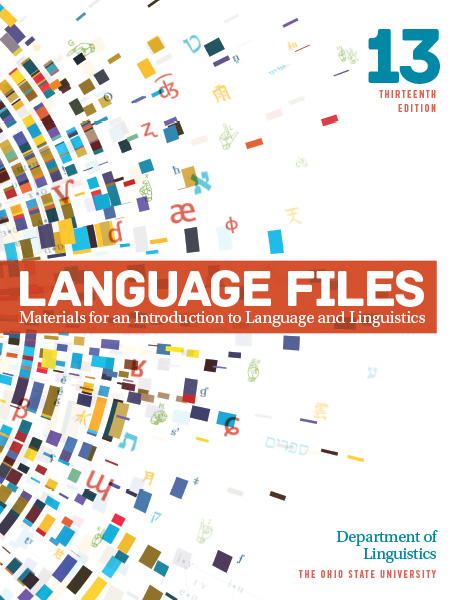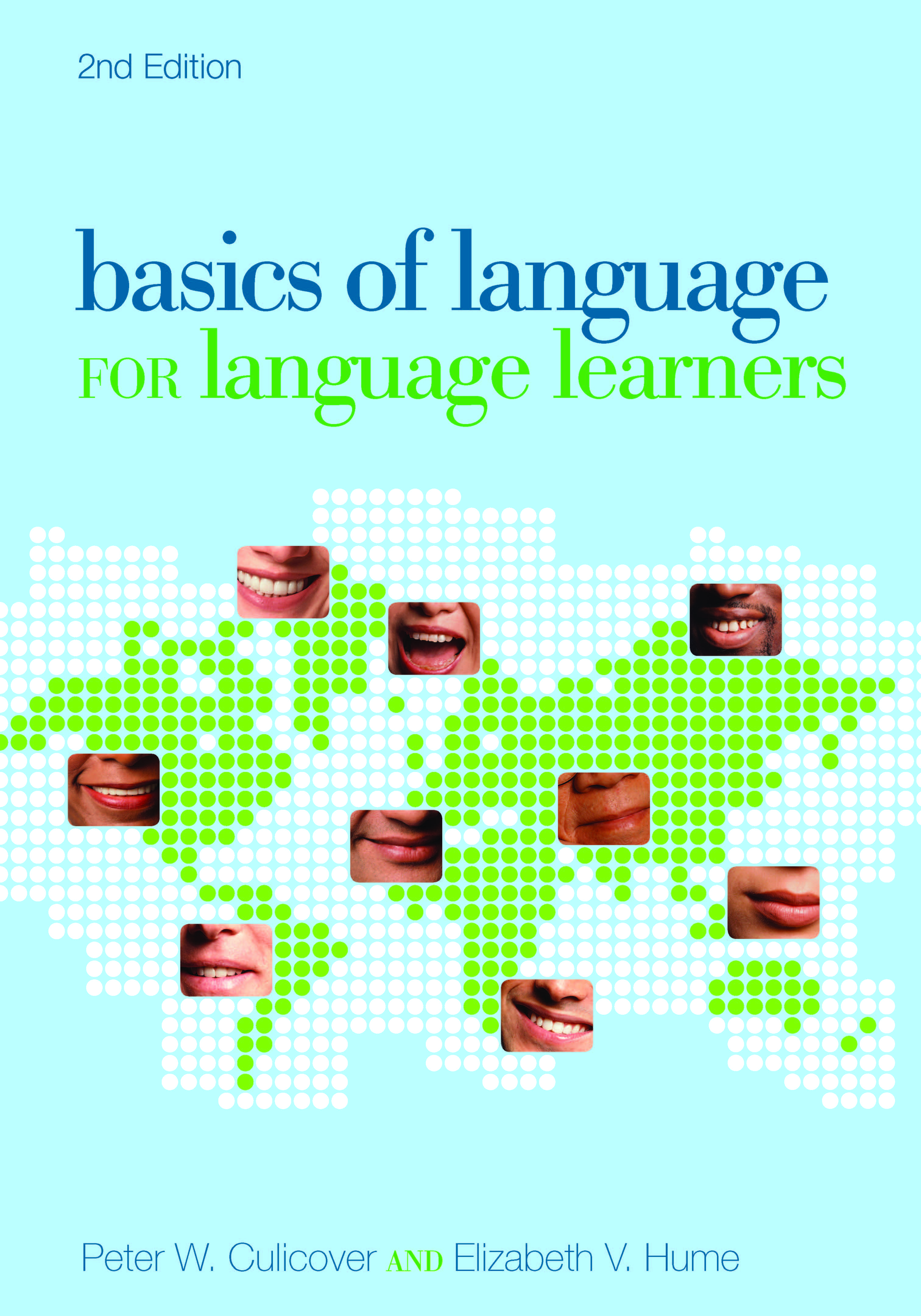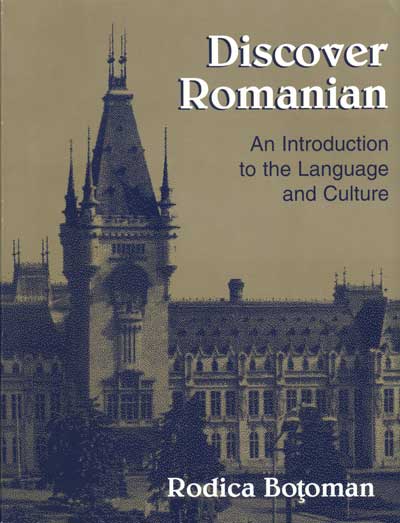Language Files has become one of the most widely adopted, consulted, and authoritative introductory textbooks to linguistics ever written. The scope of the text makes it suitable for use in a wide range of courses, while its unique organization into student-friendly, self-contained sections allows for tremendous flexibility in course design.
The thirteenth edition has been revised, clarified, and updated throughout to ensure that it remains the most comprehensive and accessible introductory linguistics textbook on the market. The revised chapter on morphology includes a more thorough discussion of allomorphy and adds sections on templatic morphology, suprasegmental morphology, and morphological metathesis to give students a more complete picture of all morphological phenomena. The chapter on language and computers has been updated with new sections on deep learning, artificial neural networks, and on other areas of computational linguistics, providing readers with a better sense of current research and applications in this rapidly developing field. Other additions include new sections on syntactic non-constituents and non-generative rule systems in the syntax chapter and a complete rewrite to the creole languages file in the language contact chapter. We have also adopted the use of the singular they when referring to a generic person whose gender is unknown or irrelevant. Exercises and lists of other readings have been updated throughout.
The Department of Linguistics at The Ohio State University (website), founded in 1963, is world renowned for its programs in computational, descriptive, theoretical, and experimental linguistics.
The Linguistics Department's Language Files main page:
http://linguistics.osu.edu/research/pubs/lang-files
Links pages:
http://linguistics.osu.edu/research/pubs/lang-files/links
Sound files pages:
http://linguistics.osu.edu/research/pubs/lang-files/sounds
Errata page:
http://linguistics.osu.edu/research/pubs/lang-files/errata
Application for Instructor Resources page credentials:
http://ohiostatepress.org/Other/LFInstMan.htm
Instructor Resources pages (includes answer key, requires credentials):
http://www.ling.ohio-state.edu/publications/files/instructors/lf13/
Contents
List of Symbols
Preface to the 13th Edition
Acknowledgments
Chapter 1: Introduction 1
File 1.0 What Is Language?
File 1.1 Introducing the Study of Language
File 1.2 What You Know When You Know a Language
File 1.3 Other (Non-Essential) Aspects of Knowing a Language
File 1.4 Design Features of Language
File 1.5 Language Modality
File 1.6 Practice
Chapter 2: Phonetics
File 2.0 What Is Phonetics?
File 2.1 Representing Speech Sounds
File 2.2 Articulation: English Consonants
File 2.3 Articulation: English Vowels
File 2.4 Beyond English: Speech Sounds of the World’s Languages
File 2.5 Suprasegmental Features
File 2.6 Acoustic Phonetics
File 2.7 The Phonetics of Signed Languages
File 2.8 Practice
Chapter 3: Phonology
File 3.0 What Is Phonology?
File 3.1 Phonotactic Constraints and Foreign Accents
File 3.2 Phonemes and Allophones
File 3.3 Phonological Rules
File 3.4 Implicational Laws
File 3.5 How to Solve Phonology Problems
File 3.6 Practice
Chapter 4: Morphology
File 4.0 What Is Morphology?
File 4.1 Words and Word Formation: The Nature of the Lexicon
File 4.2 Morphological Processes
File 4.3 Morphological Types of Languages
File 4.4 The Hierarchical Structure of Derived Words
File 4.5 Morphological Analysis
File 4.6 Practice
Chapter 5: Syntax
File 5.0 What Is Syntax?
File 5.1 Basic Ideas of Syntax
File 5.2 Syntactic Properties
File 5.3 Syntactic Constituency
File 5.4 Syntactic Categories
File 5.5 Constructing a Grammar
File 5.6 Practice
Chapter 6: Semantics
File 6.0 What Is Semantics?
File 6.1 An Overview of Semantics
File 6.2 Lexical Semantics: The Meanings of Words
File 6.3 Compositional Semantics: The Meanings of Sentences
File 6.4 Compositional Semantics: Putting Meanings Together
File 6.5 Practice
Chapter 7: Pragmatics
File 7.0 What Is Pragmatics?
File 7.1 Language in Context
File 7.2 Rules of Conversation
File 7.3 Drawing Conclusions
File 7.4 Speech Acts
File 7.5 Presupposition
File 7.6 Practice
Chapter 8: Language Acquisition
File 8.0 What Is Language Acquisition?
File 8.1 Theories of Language Acquisition
File 8.2 First-Language Acquisition: The Acquisition of Speech Sounds and Phonology
File 8.3 First-Language Acquisition: The Acquisition of Morphology, Syntax, and Word Meaning
File 8.4 How Adults Talk to Young Children
File 8.5 Bilingual Language Acquisition
File 8.6 Practice
Chapter 9: Psycholinguistics
File 9.0 How Do Our Minds Understand and Produce Language?
File 9.1 Language and the Brain
File 9.2 Language Disorders
File 9.3 Speech Production
File 9.4 Speech Perception
File 9.5 Lexical Access
File 9.6 Sentence Processing
File 9.7 Experimental Methods in Psycholinguistics
File 9.8 Practice
Chapter 10: Language Variation
File 10.0 What Is Language Variation?
File 10.1 Language Varieties
File 10.2 Variation at Different Levels of Linguistic Structure
File 10.3 Factors Influencing Variation: Regional and Geographic Factors
File 10.4 Factors Influencing Variation: Social Factors
File 10.5 Language and Identity
File 10.6 Practice
Chapter 11: Language and Culture
File 11.0 What Is the Study of “Language and Culture”?
File 11.1 Linguistic Anthropology
File 11.2 Language and Thought
File 11.3 Language and Power
File 11.4 Politeness
File 11.5 Ethnography
File 11.6 Practice
Chapter 12: Language Contact
File 12.0 What Is Language Contact?
File 12.1 Language Contact
File 12.2 Borrowings into English
File 12.3 Pidgin Languages
File 12.4 Creole Languages
File 12.5 Societal Multilingualism
File 12.6 Language Endangerment and Language Death
File 12.7 Case Studies in Language Contact
File 12.8 Practice
Chapter 13: Language Change
File 13.0 What Is Language Change?
File 13.1 Introducing Language Change
File 13.2 Language Relatedness
File 13.3 Sound Change
File 13.4 Morphological Change
File 13.5 Syntactic Change
File 13.6 Semantic Change
File 13.7 Internal Reconstruction and Comparative Reconstruction
File 13.8 Practice
Chapter 14: Animal Communication
File 14.0 How Do Animals Communicate?
File 14.1 Communication and Language
File 14.2 Animal Communication in the Wild
File 14.3 Can Animals Be Taught Language?
File 14.4 Practice
Chapter 15: Writing Systems
File 15.0 What Is Writing?
File 15.1 Writing, Language, and Culture
File 15.2 Types of Writing Systems
File 15.3 The Historical Evolution of Writing Systems
File 15.4 Practice
Chapter 16: Language and Computers
File 16.0 What Is Computational Linguistics?
File 16.1 Speech Synthesis
File 16.2 Automatic Speech Recognition
File 16.3 Communicating with Computers
File 16.4 Machine Translation
File 16.5 Corpus Linguistics
File 16.6 Practice
Chapter 17: Practical Applications
File 17.0 What Can You Do with Linguistics?
File 17.1 Language Education
File 17.2 Speech-Language Pathology and Audiology
File 17.3 Forensic Linguistics
File 17.4 Language in Advertising
File 17.5 Codes and Code-Breaking
File 17.6 Being a Linguist
File 17.7 Practice
Appendix: Answers to Example Exercises
Glossary
Selected Bibliography
Language Index
Subject Index
IPA Symbols and Example Words
American English Consonant and Vowel Charts
Official IPA Chart
The Ohio State University Press is pleased to provide any qualified instructor with a complimentary desk copy of Language Files: Materials for an Introduction to Language and Linguistics, 13th Edition. Use the following form to request an exam copy (if you are considering assigning the book) or desk copy (if you have already assigned the book). We provide digital exam copies and physical or digital desk copies.
Related Titles:

When Languages Collide
Perspectives on Language Conflict, Language Competition, and Language Coexistence
Joseph, Destefano, Jacobs, and Lehiste
CLOTH




